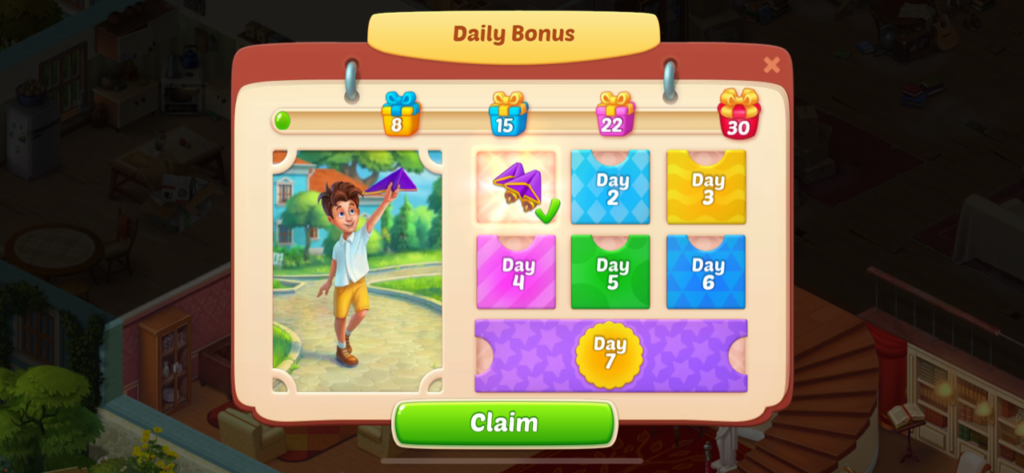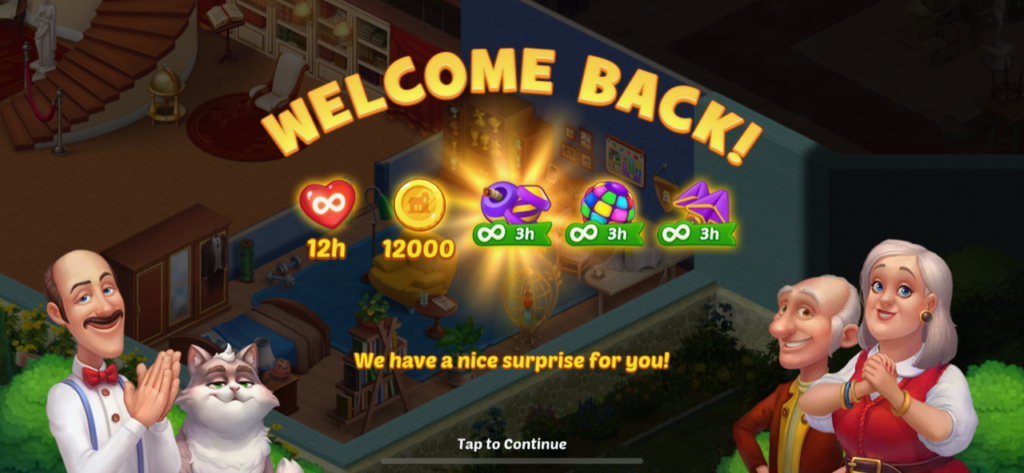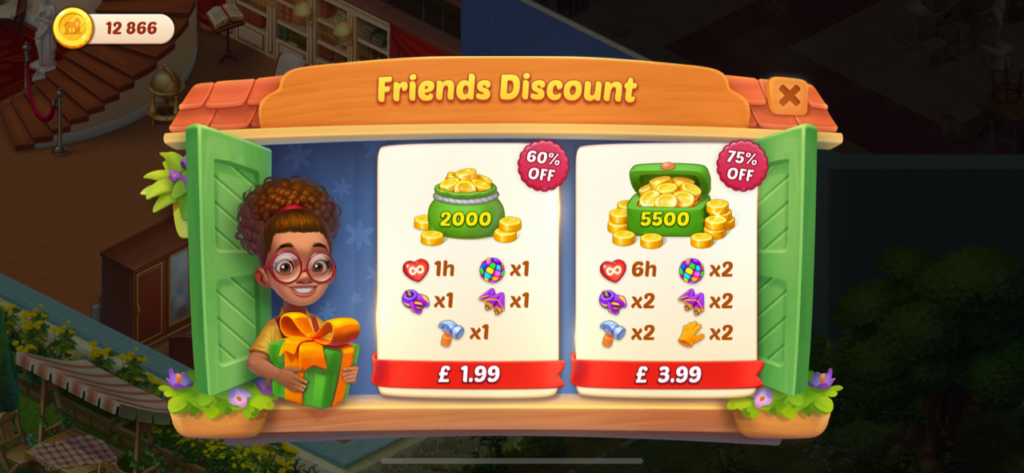· 9 min read
The Metrics That Make for a Great Match 3 Game – And How to Reach Them

Chay Hunter
EVP, Marketing at GameAnalytics
The match 3 genre has given us some of the most successful, long-running games of all time. With Benchmarks+ we can see what metrics make the best match 3 games successful.
We recently updated our Benchmarks+ tool to include 25 sub-genres – one of which is ‘match 3 puzzle’. So now that we can see this classic, much-loved sub-genre in all its multi-metric magnificence, let’s take a look at what a successful match 3 game looks like.
To start with: what is a match 3 game?
Pretty much any game that challenges you to put matching objects together can be classified as a match 3 game.
They started back in the eighties, with games like Tetris, Chain Shot! and Puzznic. In the 2000s, there was Candy Crush and Bejeweled Blitz. And more recently, there are popular titles like Ticket to Earth, Triple Town and TwoDots. But newer versions of classics like Candy Crush (and Tetris, for that matter) are still going strong.
In core gameplay mechanics, these games are all very similar: players have to match three (or more) of the same tiles. Those tiles disappear, creating clear space for new tiles to appear in a random order.
As players advance through levels, the tiles usually become more varied. Sometimes there are physical blocks or spaces between tiles. And your time limit or number of moves available steadily decreases, level by level. All these things create fresh challenges for the player to overcome.
Why have they proved so popular?
There aren’t many genres that have maintained their appeal right through from the very dawn of gaming. But match 3 games have. Here’s why we think that is:
They offer quick-fire gratification
You get a little challenge every few seconds when new tiles appear – and it’s satisfying to solve them and see the tiles then disappear, often with an animated flurry of colors. It creates a very fast cycle of challenge and reward. It’s also really quick and easy to jump into that cycle, because the core gameplay loop is so simple.
They have accessible, broad appeal
If you wanted to get a young child or an elderly relative into gaming, you’d probably start them with a match 3 game. The premise and interface are so simple that it takes mere seconds to explain how to play – if you even need to explain at all. And because it’s ‘snackable’, you never need to devote huge amounts of time to it.
Developers like making them, so there’s always plenty to choose from
Match 3 games are simple to develop and offer high return on IAPs, with players using in-game items to help them progress through harder levels. Players typically expect ads, which sit neatly in between levels or attempts. Also, there’s a higher chance of a game to become an ‘evergreen hit’ like Candy Crush, because the genre’s appeal is so timeless.
They sit in a nice little niche between idle and challenging
Match 3 games aren’t especially difficult – you just match the tiles together. But there is a challenge there. They demand a bit more thought than idle or hyper-casual games. But it’s a very habitual kind of challenge. It’s easy to get into a flow without having to stop and think about it too much.
Some of the KPIs you should be targeting
On Benchmarks+, you can get accurate insights on KPIs for the top 5%, 10%, and 20% of the best performing games. (And you can look even closer with the Pro edition.) Now that we can filter the puzzle genre down to look specifically at match 3 puzzle games, here’s what we see.
- D7 Retention: Anything above 20% is good.
- Conversion: Aim for at least 1.69%, but don’t stop once you get there – some of the top-performing games are hitting conversion rates as high as 3.5% to 4%.
- Session length: Match 3 games tend to have high session lengths. You should try to aim for session lengths of up to around 30 minutes.
So how do you reach these hallowed metrics? It breaks down into two areas: first you need to make a good game, and then you need to get your monetization right.
How to make a good match 3 game
Although they’re based on a simple concept, making a good match 3 game isn’t easy. There are lots of them out there, so the competition is fierce. To reach the top, you need to nail every aspect of the genre.
1. Keep it easy to understand
Good match 3 games have a clear hook and objective on each and every level. Innovation is good, but in your drive to create something unique, you mustn’t sacrifice the simplicity that makes the genre work in the first place.
2. Use a dead simple visual style
A good match 3 game needs to be immersive. No matter what visual style you go for, it needs to stay simple and consistent. In Candy Crush, for example, literally everything is candy based – down to the menus and the icons. Your shapes and colors need to be easily recognizable so the style stays consistent, but also for gameplay assets to be easily distinguishable.
3. Get the right pacing to keep players coming back
You need to ramp up the challenge in a slow, consistent way – a sudden jump in difficulty could lose your players. If you introduce new mechanics at a certain level, they need to be easy to explain – and you need to give the player unchallenging opportunities to use them when they first appear.
4. Make success as gratifying as possible
In the early days of gaming, there was little more satisfying than sliding a single Tetris block into a perfectly-shaped gap and watching four lines clear at once. Over the years, the visuals have grown more colorful and animated, but the concept is the same. Matching 3 should feel rewarding. Clearing a level should feel like a little celebration – especially on the harder levels. Be sure to acknowledge your players’ achievements.
5. Give it an overarching narrative
The narrative of a match 3 game is never going to be an emotionally deep, edge-of-your-seat epic. But it should have a narrative. Even a game as simple as Candy Crush frames its levels around the troubles of the Candy Kingdom’s residents. You won’t keep players engaged if you don’t tell them why they need to match 3.
6. Cultivate the game over the long term
If you want an evergreen hit, you need to keep a steady flow of content going. You’ll need to dedicate plenty of time to adding updates, building new levels and giving a new sense of challenge to players who are getting very good at it.
How to effectively monetize your match 3 game
Even if you have a great game with high retention and evergreen potential, you need to get the money bits right. Match 3 games are mostly free to play and rely on a mixture of IAP and ads. So here are our best tips to make the most out of them.
Use incentives and rewards
Give players rewards for playing consistently. They can be daily, weekly and monthly. Completing at least one level every day for a week, for example, can earn the player an extra attempt at a tough level. Or if they use a specific item every day for a month, they get more of that item. Incentives like these work well to boost retention in Match 3s.

Make use of incentivized ads
These kinds of ads work really well with the structure of match 3 games. If a player fails a level a certain number of times, you can give them the option to watch an ad in return for something that helps them crack that level.
Give IAP items as occasional freebies
Players are much more likely to buy in-game items if they can try them out to see how effective they are. So when you’re sending a notification or reminder, sometimes throw in an item or power-up the player would usually need to pay for. This gives them a reason to return and also boosts the chances of them buying that item in future.
Use notifications to your advantage
Offering rewards and help at the right time can convince players to return to a level they may be stuck on or giving up on. For example: if they’ve struggled with a particular level, give the player a notification saying they can get two extra moves if they log in and retry it today.

Use special events and limited edition items
Both these things create urgency. Usually, if there are new levels, users can play them at any time. If there are new in-game items for purchase the player can buy them later on, or not at all. With special events and limited edition items, the player has to log on and get involved before the opportunity passes.
Create a friends system
Players love helping each other out. You can use this to layer in incentives like rewards and missions. Create a map where players can see exactly which levels their friends are stuck on. Then give them the chance to gift one another IAPs and items that can help them out.

Get Benchmarks+ to see how the top games are finding success
On Benchmarks+ you can monitor global trends and see exactly what metrics you need to hit the top echelons of the market – in each genre and sub-genre.
It’s the world’s biggest store of mobile gaming data, tracking:
- 100,000+ mobile games
- 45,000+ studios
- 1.2+ billion players each month
- 16 billion sessions each month
- 150 million transactions each month
And here’s the kicker: the standard edition of Benchmarks+ is totally free.